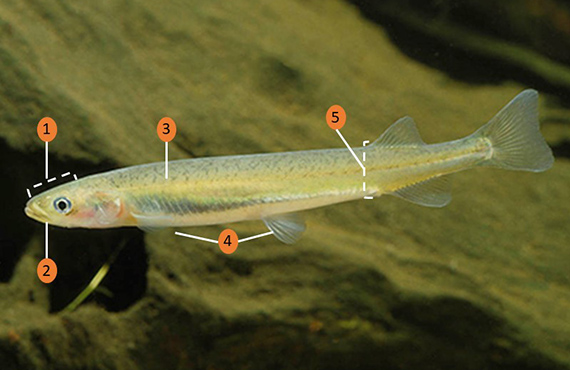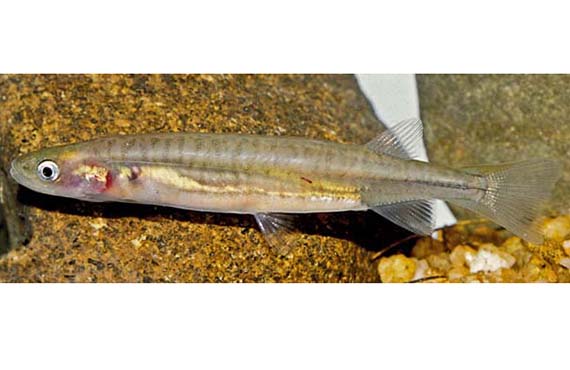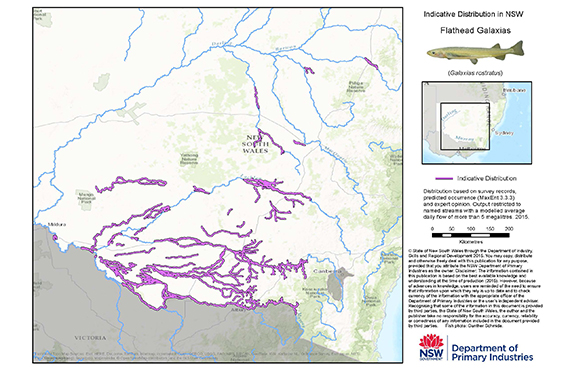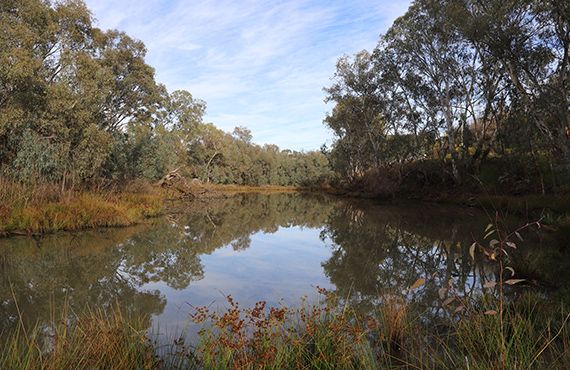
Flathead galaxias
Scientific name
Galaxias rostratus
Status in NSW
Critically endangered.
Characteristics
- Flattened head
- Large mouth with equal-sized jaws
- Light olive green body with light mottling
- Very small transparent pectoral and pelvic fins
- Dorsal fin origin always slightly in front of anal fin
Species similar in appearance
Flathead Galaxias are similar in appearance to other Galaxias such as the Obscure Galaxias and the Common Jollytail, although the distinctive flat head of the Flathead Galaxias that it is name after is a distinguishing feature.
See How to Identify a Flathead Galaxias.
Size
They can grow to about 15 cm in length.
Distribution
Flathead Galaxias is known from the southern part of the Murray Darling Basin. They have been recorded in the Macquarie, Lachlan, Murrumbidgee and Murray Rivers in NSW. Despite extensive scientific sampling over the past 15 years there have been very few recorded sightings of Flathead Galaxias. They have not been recorded and are considered locally extinct in the lower Murray, Murrumbidgee, Macquarie and Lachlan Rivers. The species is now only known from the upper Murray River near Tintaldra and wetland areas near Howlong.
Habitat
Flathead Galaxias are found in still or slow moving water bodies such as wetlands and lowland streams. The species has been recorded forming shoals. They have been associated with a range of habitats including rock and sandy bottoms and aquatic vegetation. Flathead Galaxias spawn in spring and lay slightly adhesive demersal eggs.
Why is the Flathead Galaxias threatened?
- Spawning or recruitment failure due to water regulation and cold water release from impoundments
- Loss of or altered connectivity between rivers and floodplains
- Loss of or degradation of habitats in lakes, wetlands and billabongs such as the loss of aquatic vegetation0
- Predatory by and competition with introduced species such as Carp (Cyprinus carpio), Redfin Perch (Perca fluviatilis) and Gambusia (Gambusia holbrooki)
- Construction of weirs and dams without fishways create barriers to migration and recolonisation
- Pollution from domestic, agricultural and industrial sources






